TMS9918A emulator. Core engine written in C99. Zero dependencies.
The goal is to emulate all documented modes listed in the TMS9918/TMS9918A/TMS9928A/TMS9929A datasheet
Supported Modes
- Graphics I (including sprites)
- Graphics II (including sprites)
- Multicolor mode (including sprites)
- Text
Other features
- 5th sprite
- Sprite collisions
- VSYNC interrupt
- Individual scanline rendering
Demos:
Graphics Mode I Demo

Graphics Mode I Demo

Graphics Mode II Demo

Multicolor Mode Demo

Quick start
#include "vrEmuTms9918.h"
#include "vrEmuTms9918Util.h"
#define TMS_VRAM_NAME_ADDRESS 0x3800
#define TMS_VRAM_COLOR_ADDRESS 0x0000
#define TMS_VRAM_PATT_ADDRESS 0x2000
#define TMS_VRAM_SPRITE_ATTR_ADDRESS 0x3B00
#define TMS_VRAM_SPRITE_PATT_ADDRESS 0x1800
// program entry point
int main()
{
// create a new tms9918
VrEmuTms9918 *tms9918 = vrEmuTms9918New();
// Here, we're using the helper functions provided by vrEmuTms9918Util.h
//
// In a full system emulator, the only functions required (connected to the system bus) would be:
//
// * vrEmuTms9918WriteAddr()
// * vrEmuTms9918WriteData()
// * vrEmuTms9918ReadStatus()
// * vrEmuTms9918ReadData()
//
// The helper functions below wrap the above functions and are not required.
// vrEmuTms9918Util.h/c can be omitted if you're not using them.
//
// For a full example, see https://github.com/visrealm/hbc-56/blob/master/emulator/src/devices/tms9918_device.c
// set up the VDP write-only registers
vrEmuTms9918WriteRegisterValue(tms9918, TMS_REG_0, TMS_R0_MODE_GRAPHICS_I);
vrEmuTms9918WriteRegisterValue(tms9918, TMS_REG_1, TMS_R1_MODE_GRAPHICS_I | TMS_R1_RAM_16K);
vrEmuTms9918SetNameTableAddr(tms9918, TMS_VRAM_NAME_ADDRESS);
vrEmuTms9918SetColorTableAddr(tms9918, TMS_VRAM_COLOR_ADDRESS);
vrEmuTms9918SetPatternTableAddr(tms9918, TMS_VRAM_PATT_ADDRESS);
vrEmuTms9918SetSpriteAttrTableAddr(tms9918, TMS_VRAM_SPRITE_ATTR_ADDRESS);
vrEmuTms9918SetSpritePattTableAddr(tms9918, TMS_VRAM_SPRITE_PATT_ADDRESS);
vrEmuTms9918SetFgBgColor(tms9918, TMS_BLACK, TMS_CYAN);
// send it some data (a pattern)
vrEmuTms9918SetAddressWrite(tms9918, TMS_VRAM_PATT_ADDRESS);
// update pattern #0
char smile[] = {0b00111100,
0b01000010,
0b10000001,
0b10100101,
0b10000001,
0b10011001,
0b01000010,
0b00111100};
vrEmuTms9918WriteBytes(tms9918, smile, sizeof(smile));
// update fg/bg color for first 8 characters
vrEmuTms9918SetAddressWrite(tms9918, TMS_VRAM_COLOR_ADDRESS)
vrEmuTms9918WriteData(tms9918, vrEmuTms9918FgBgColor(TMS_BLACK, TMS_LT_YELLOW));
// output smile pattern to screen
vrEmuTms9918SetAddressWrite(tms9918, TMS_VRAM_NAME_ADDRESS);
// a few smiles
vrEmuTms9918WriteData(tms9918, 0x00);
vrEmuTms9918WriteData(tms9918, 0x00);
vrEmuTms9918WriteData(tms9918, 0x00);
// render the display
char scanline[TMS9918A_PIXELS_X]; // scanline buffer
// an example output (a framebuffer for an SDL texture)
uint32_t frameBuffer[TMS9918A_PIXELS_X * TMS9918A_PIXELS_Y];
// generate all scanlines and render to framebuffer
uint32_t *pixPtr = frameBuffer;
for (int y = 0; y < TMS9918A_PIXELS_Y; ++y)
{
// get the scanline pixels
vrEmuTms9918ScanLine(tms9918, y, scanline);
for (int x = 0; x < TMS9918A_PIXELS_X; ++x)
{
// values returned from vrEmuTms9918ScanLine() are palette indexes
// use the vrEmuTms9918Palette array to convert to an RGBA value
*pixPtr++ = vrEmuTms9918Palette[scanline[x]];
}
}
// output the buffer...
...
// clean up
vrEmuTms9918Destroy(tms9918);
tms9918 = NULL;
return 0;
}
Real example
This library is used in the HBC-56 emulator.
The HBC-56 uses this library to support:
- Rendering to an SDL texture.
- TMS9918A VSYNC Interrupts.
- Time-based rendering. Supports beam-time.
Full source: hbc-56/emulator/src/devices/tms9918_device.c
License
This code is licensed under the MIT license
 Troy Schrapel
Troy Schrapel Since the initial release of the PICO9918, the rendering has been provided by this TMS9918 library, proving it to be a reliable software implementation of the original device.
Since the initial release of the PICO9918, the rendering has been provided by this TMS9918 library, proving it to be a reliable software implementation of the original device.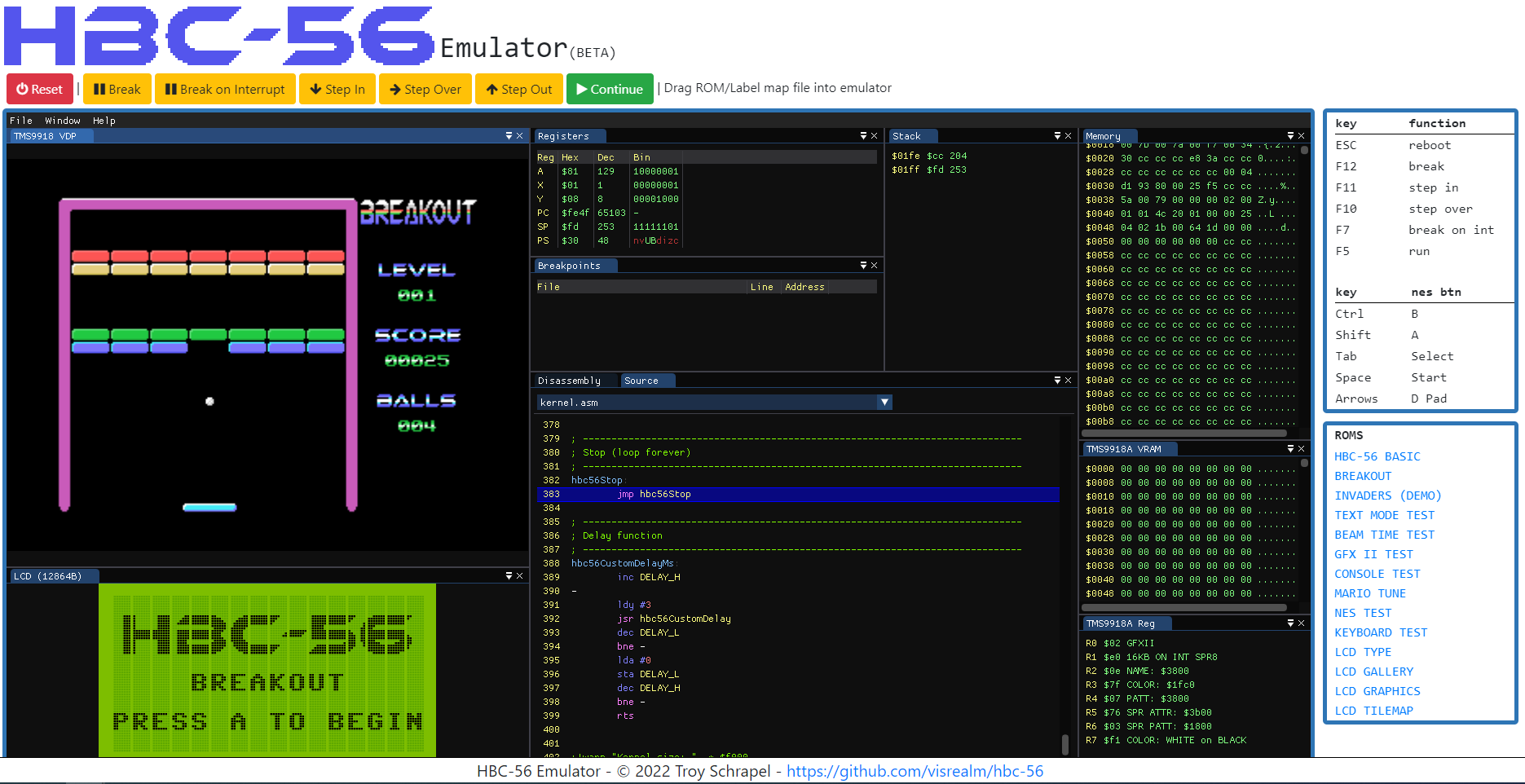
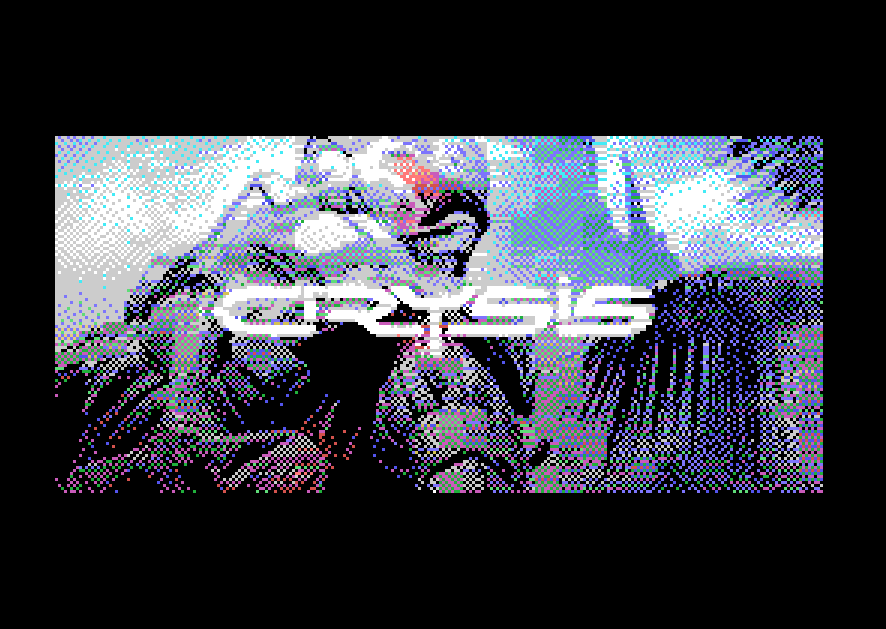
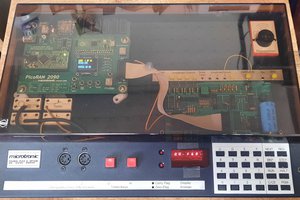
 Michael Wessel
Michael Wessel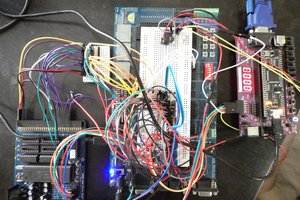
 zpekic
zpekic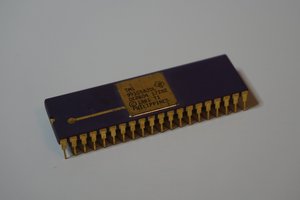
 Erik Piehl
Erik Piehl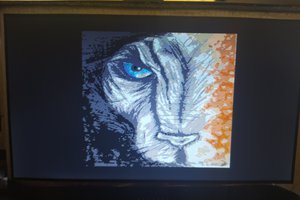
 Leon
Leon